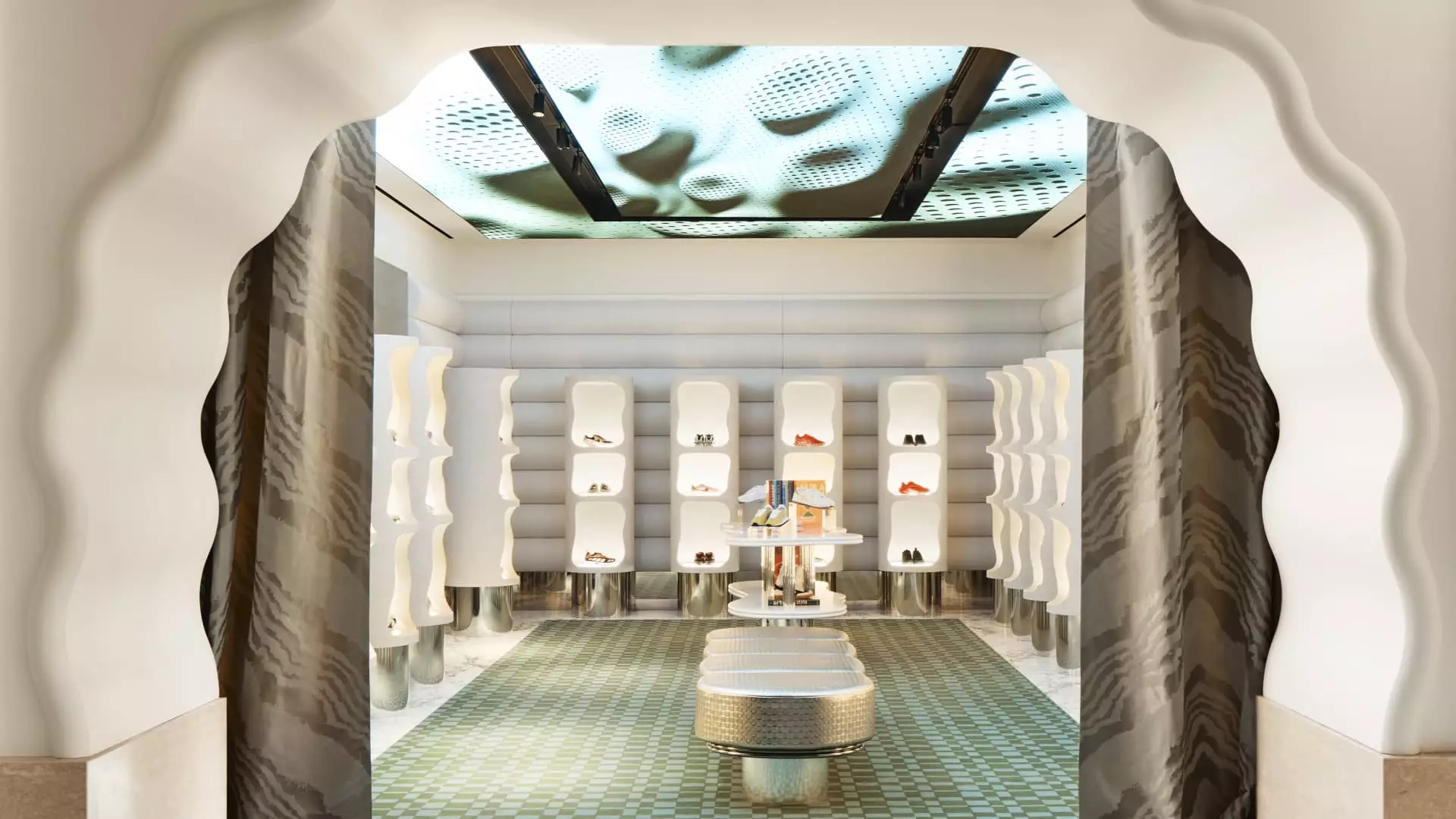In an ambitious leap toward transatlantic luxury retail, French luxury retailer Printemps has officially launched its first U.S. store in New York City’s Financial District. This bold entrance marks a significant moment not just for the brand, but for the entire luxury retail landscape that has been hanging in a precarious balance amid economic uncertainties. The store’s inauguration slots perfectly with the arrival of spring, a veritable hint to the renewal and rebirth that the luxury market desperately craves. Some might view this endeavor as reckless, particularly given the ongoing stagnation in luxury expenditures, but there’s something refreshing—and perhaps even empowering—about Printemps’ decision to tropicalize the Manhattan retail scene.
A Unique Touch Within a Sea of Luxury
Printemps offers a captivating blend of traditional opulence with a modern twist through its 55,000-square-foot two-floor setup. What sets this location apart from its luxury contemporaries is not only its distinct architecture but also its curation of brands. A staggering 25% of its selections consist of niche, hard-to-find French labels that are absent from American shores. Flamboyant offerings, such as the bags worn by A-list celebrities like Taylor Swift, demonstrate that Printemps is not just another retailer; it aims to conquer the hearts and wallets of affluent Americans yearning for something unique.
CEO Jean-Marc Bellaiche’s vision encapsulates an evolving understanding of luxury shopping, one that acknowledges the need for experiential offerings, including spa treatments and personal styling services. This concept launches the brand into a more dedicated sphere, solidifying Printemps as a lifestyle destination rather than just a shopping stop.
The Red Room: Merging History with Consumer Engagement
The pièce de résistance of the Printemps boutique is undoubtedly the meticulously restored Red Room. Historically rich and adorned with intricate mosaics designed by the esteemed Hildreth Meiére, this Art Deco marvel was once a banking hall, but has now been transformed into a mesmerizing “shoe forest” where shoppers can lounge with a glass of wine. This merging of history with modern retail use is not merely clever marketing—it’s a calculated gamble that adds layers of depth, engaging consumers on multiple levels.
However, one might question whether the historical significance and ornate aesthetics can be transformed into sustainable sales figures. Will the luxurious surroundings translate into increased foot traffic and, subsequently, revenue? Only time will tell, but the spatial strategy demonstrates the brand’s aptitude for capturing interest in a time when monotony reigns in retail spaces.
Navigating a Complicated Economic Landscape
Opening during a time when luxury spending is reportedly declining globally adds a heavy weight to Printemps’ shoulders. While inflation has made even the wealthiest consumers cautious, Bellaiche’s choice to infiltrate the U.S. market during such turbulence raises eyebrows. The strategic timing could seem foolhardy, yet it reveals an audacious confidence in American consumer resilience. According to Kearney, the U.S. is expected to remain a critical player in luxury retail due to its consumer spending appetite.
Even as some luxury brands scale back, others like Tiffany & Co. and Louis Vuitton continue to make substantial investments in physical retail spaces. There’s an inherent belief that the tactile experience and specialized service found in luxury retail can’t be replicated online—a sentiment that Printemps is keen on leveraging.
Engaging the Aspirational Shopper
Another critical aspect of Printemps’ approach is its recognition of the ‘aspirational shopper.’ Alongside high-ticket luxury items, lower-priced alternatives cater to tourists and average consumers who may wander in for a coffee or a casual browse. This strategy shows a keen awareness of market dynamics and consumer behavior, effectively balancing exclusivity with accessibility.
The goal is to create a welcoming environment where all shoppers feel a part of the luxury experience. By integrating various price points, Printemps positions itself not merely as an elite retailer, but as a ubiquitous point of interest—a destination where socioeconomic divides can momentarily dissolve in a shared appreciation of beauty and elegance.
The Road Ahead: A Risk Worth Taking?
Despite the potential pitfalls that lie ahead, the gamble taken by Printemps signals a new trend in luxury retail: the desire to provide an experience that transcends mere product consumption. As global economics continue to shift and consumer attitudes evolve, Printemps may just be the bold innovator that reinvigorates interest in luxury shopping. Their simultaneous embrace of high-end exclusivity and the aspirational shopper ethos could pave the way for transformative change in how luxury retail operates in the modern age. The narrative around privilege, accessibility, and community in high-end retail has never been more complex, and Printemps is already shaping a fascinating chapter in that ongoing story.

